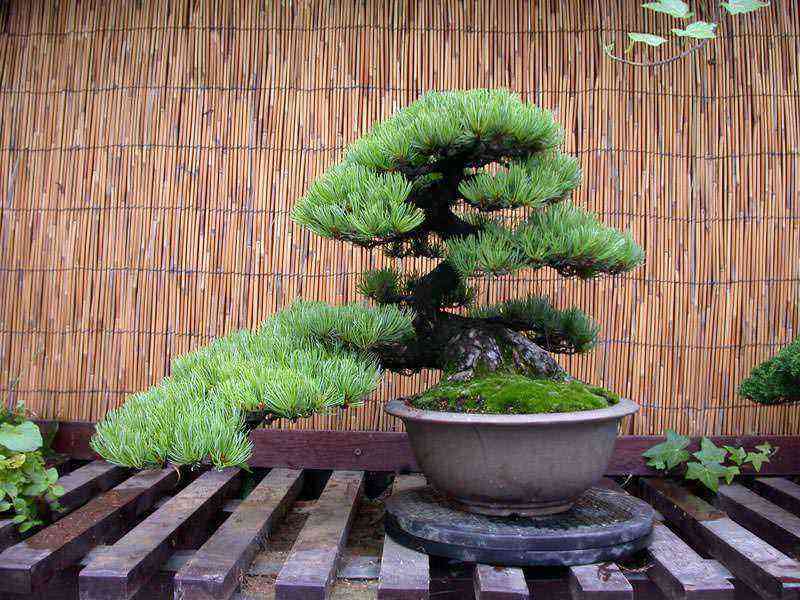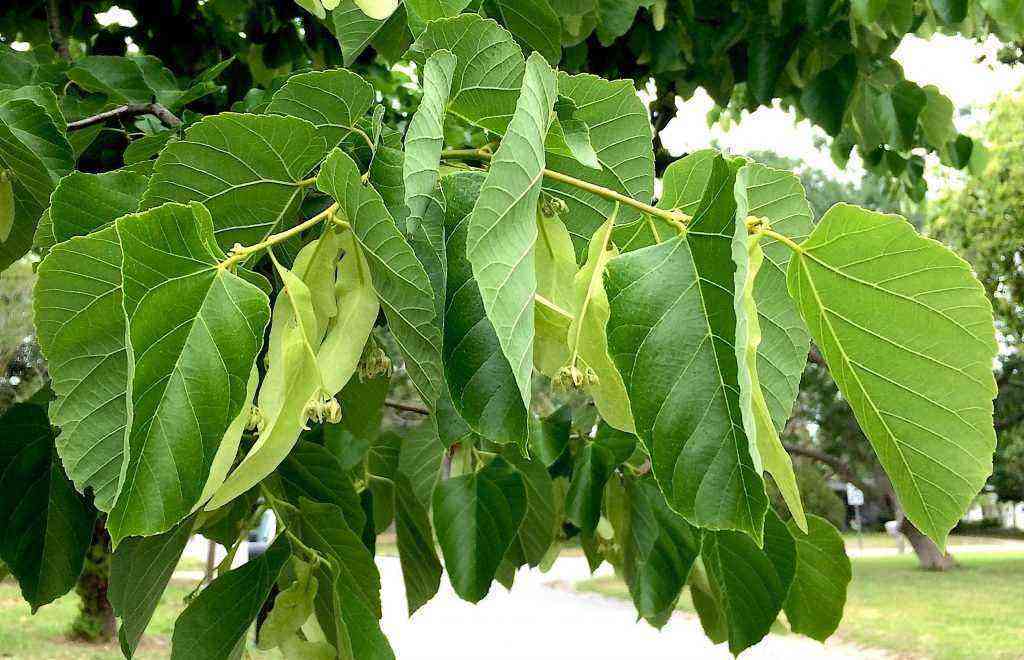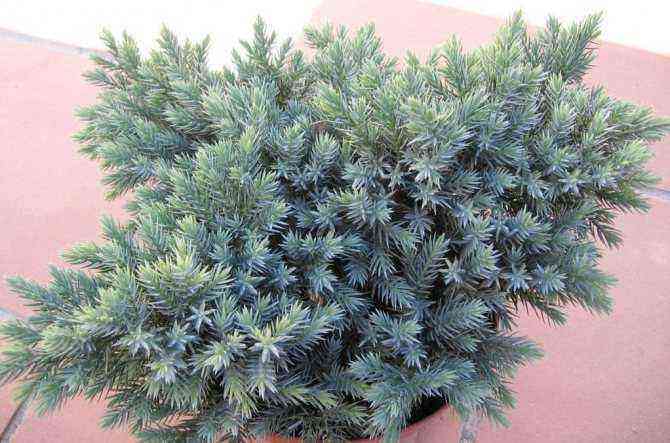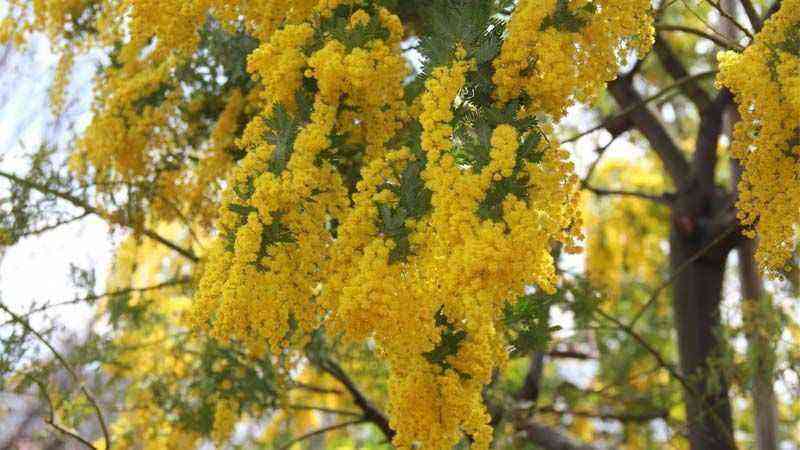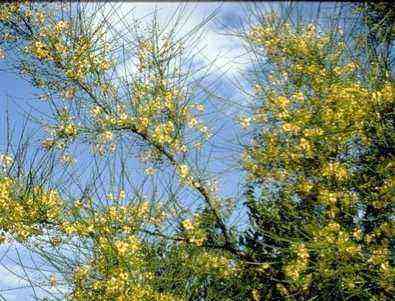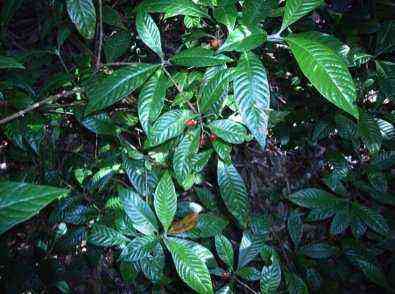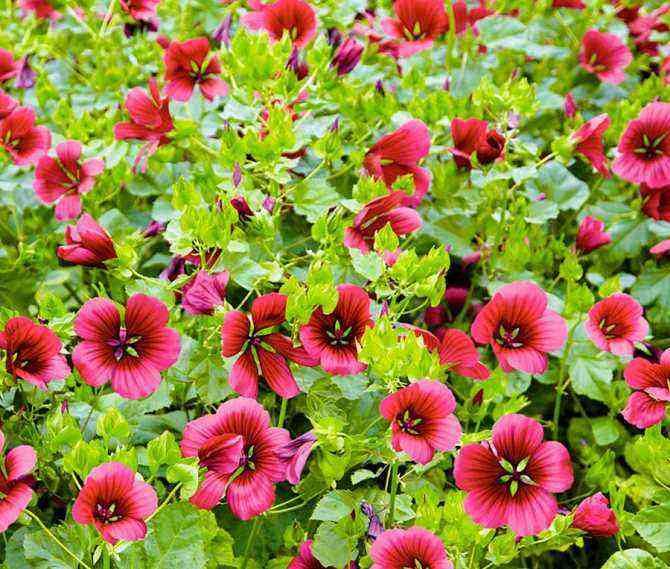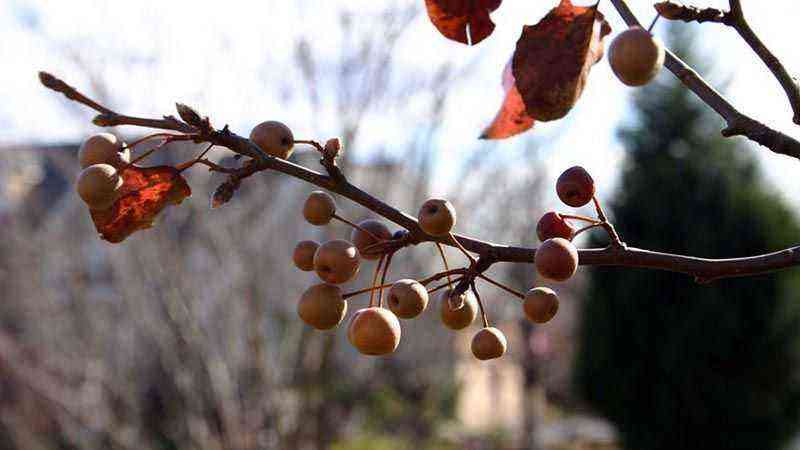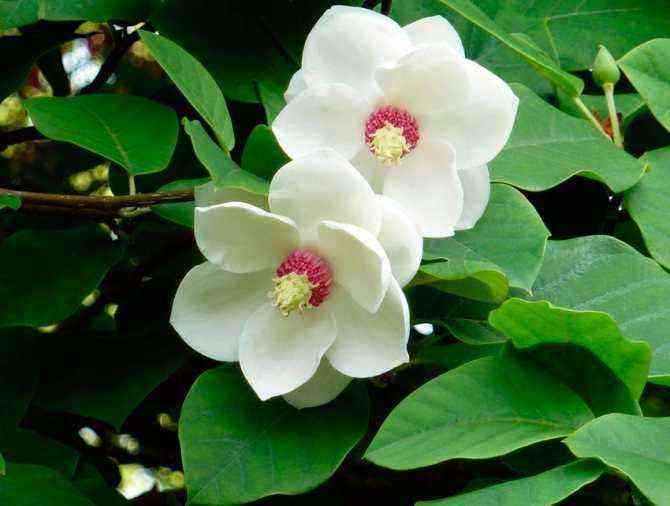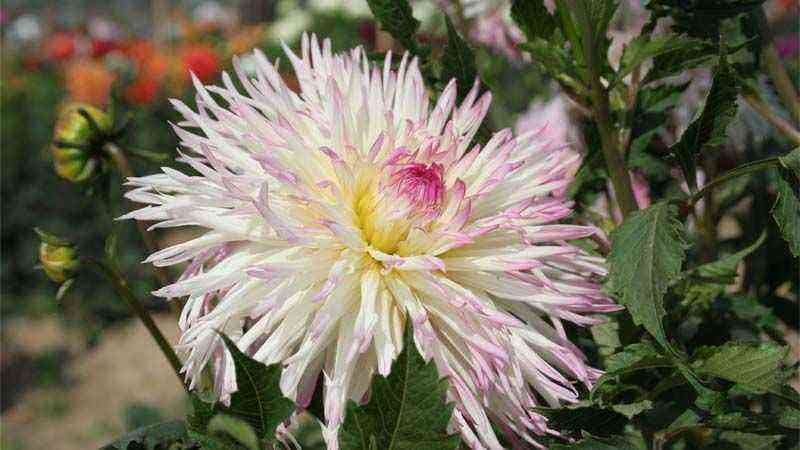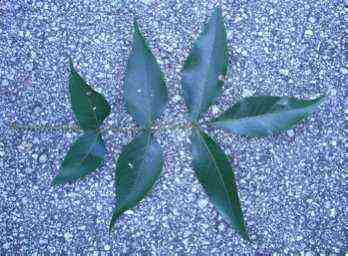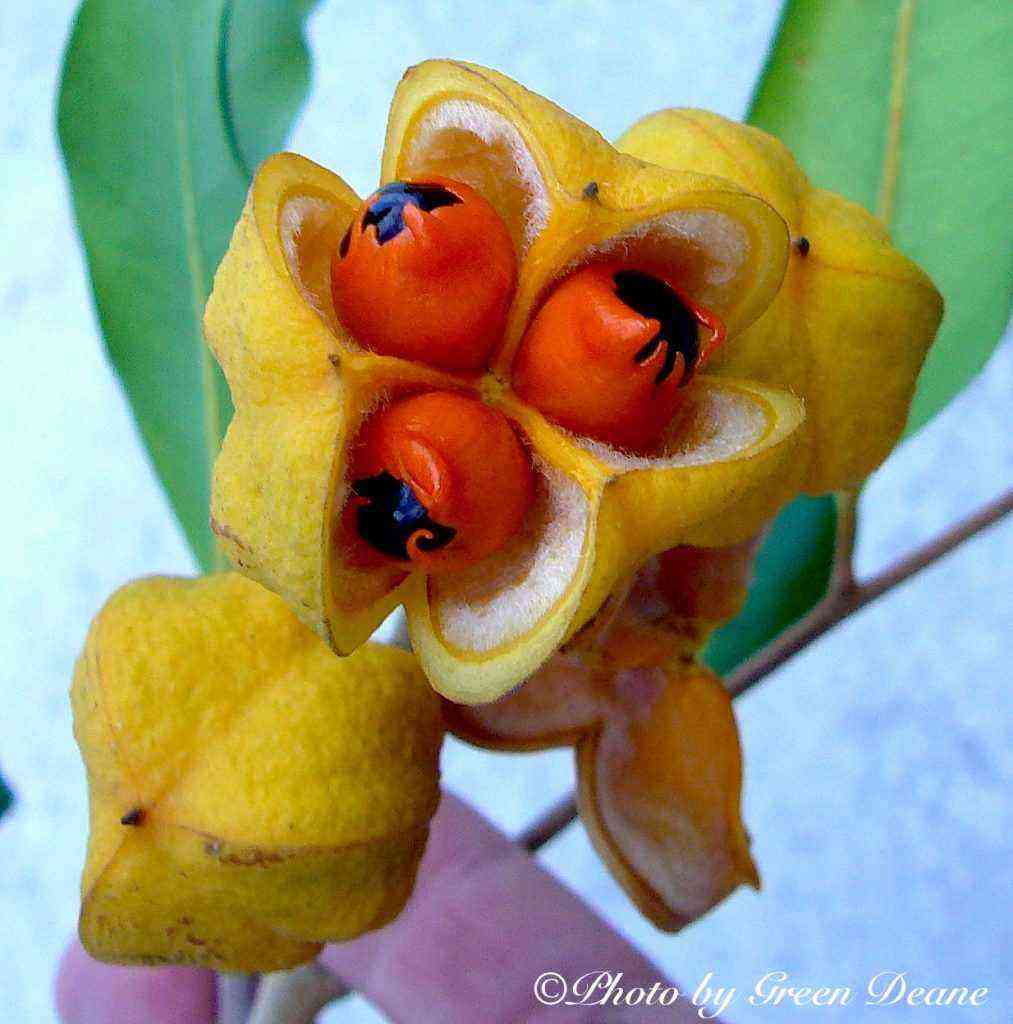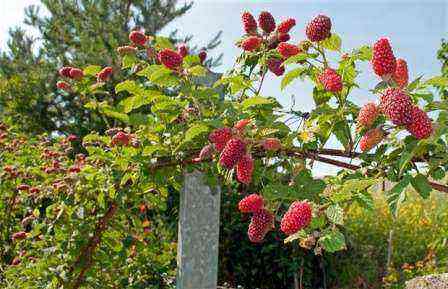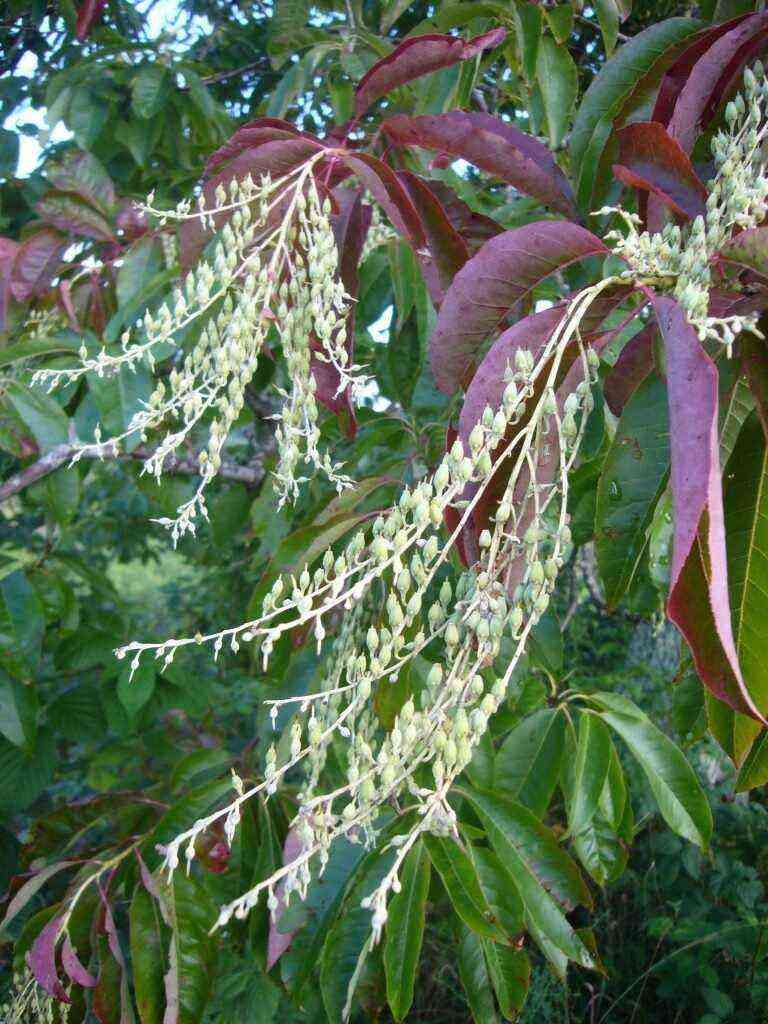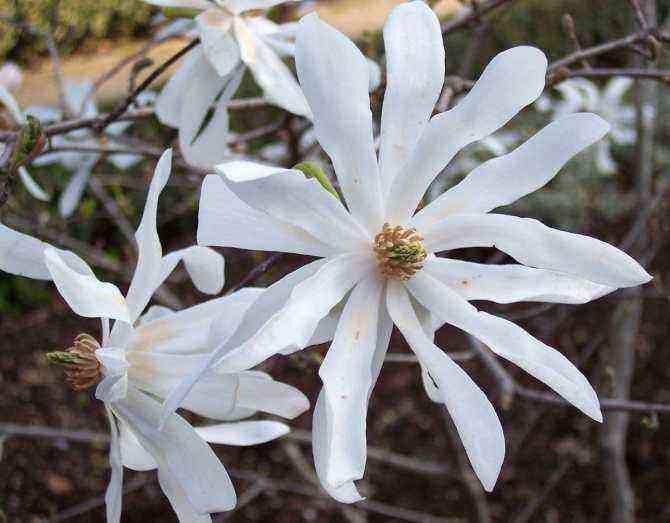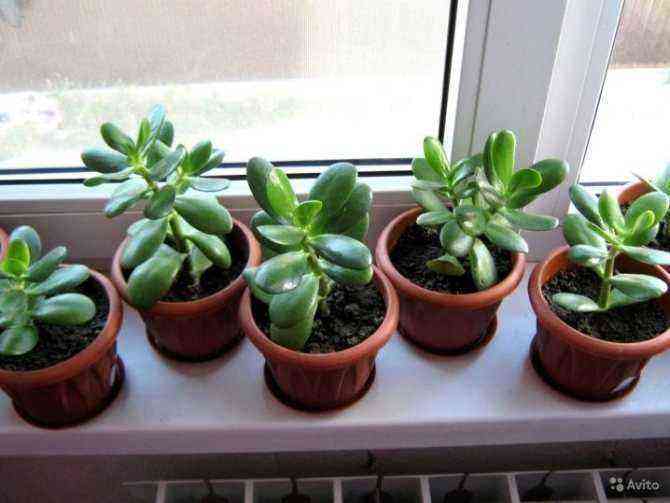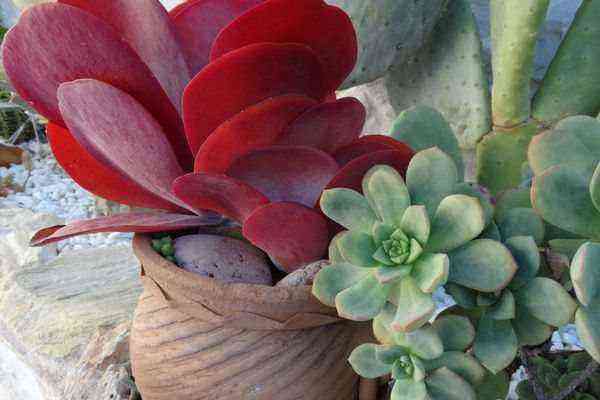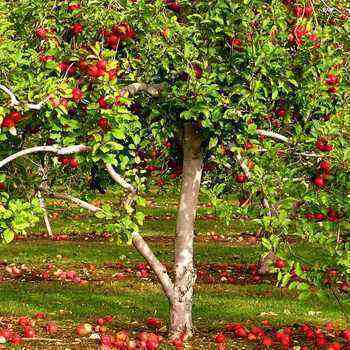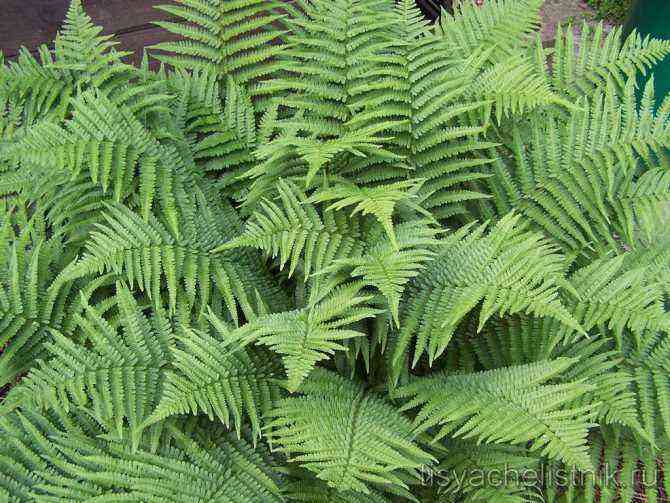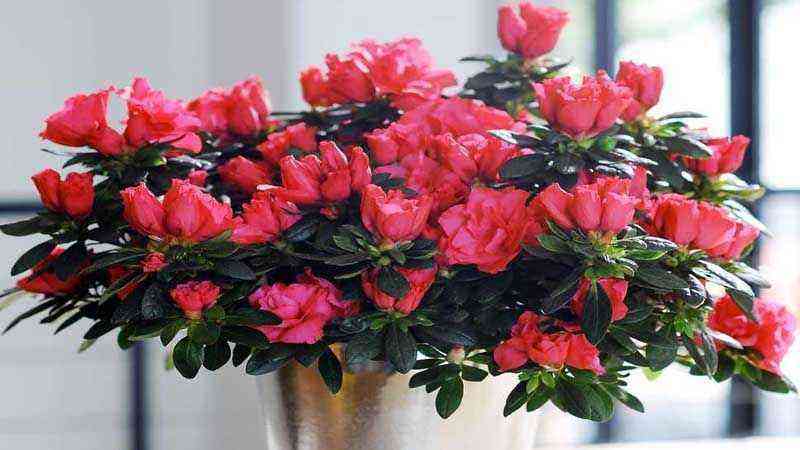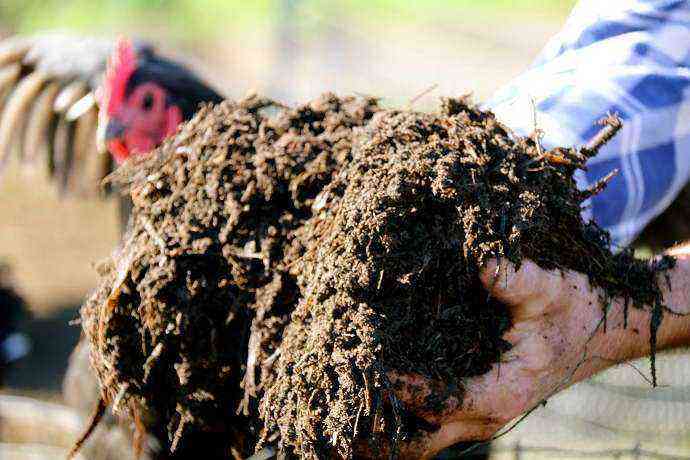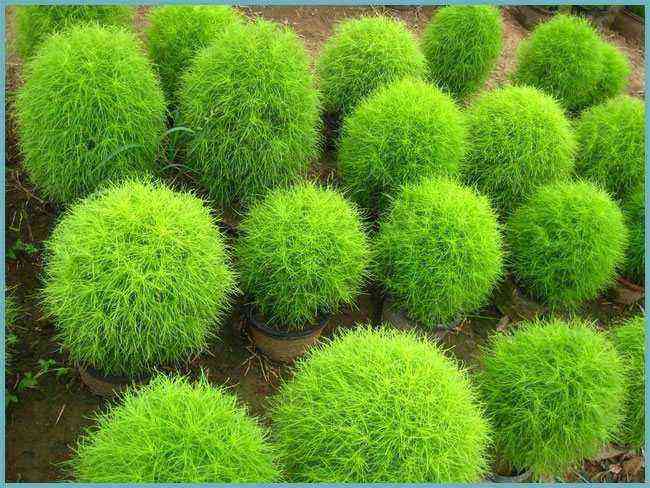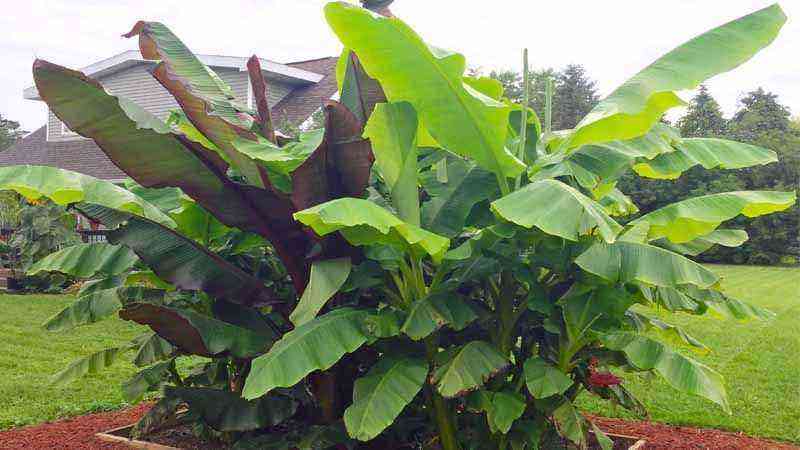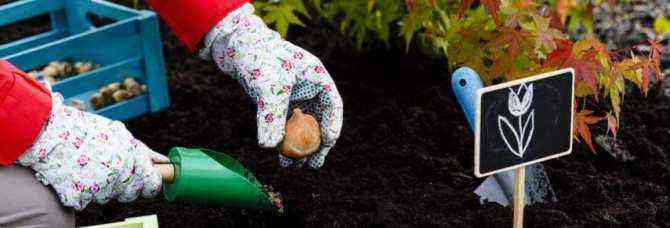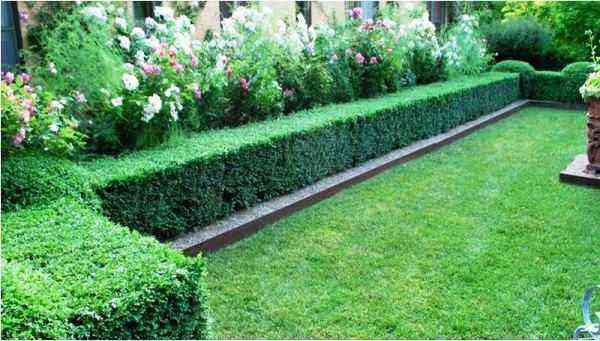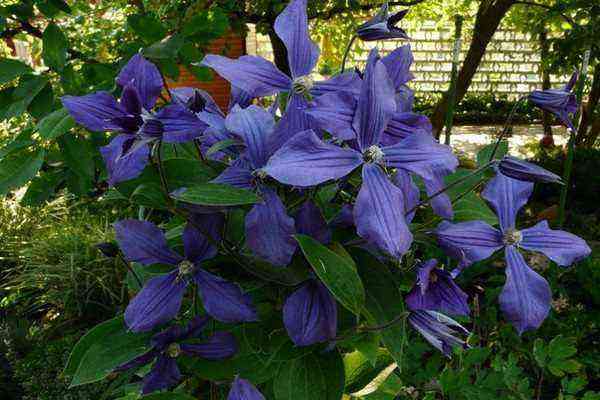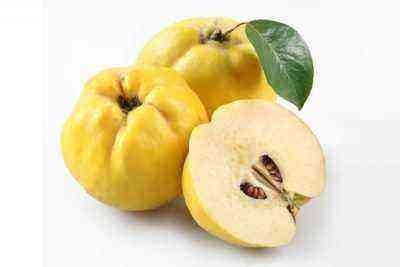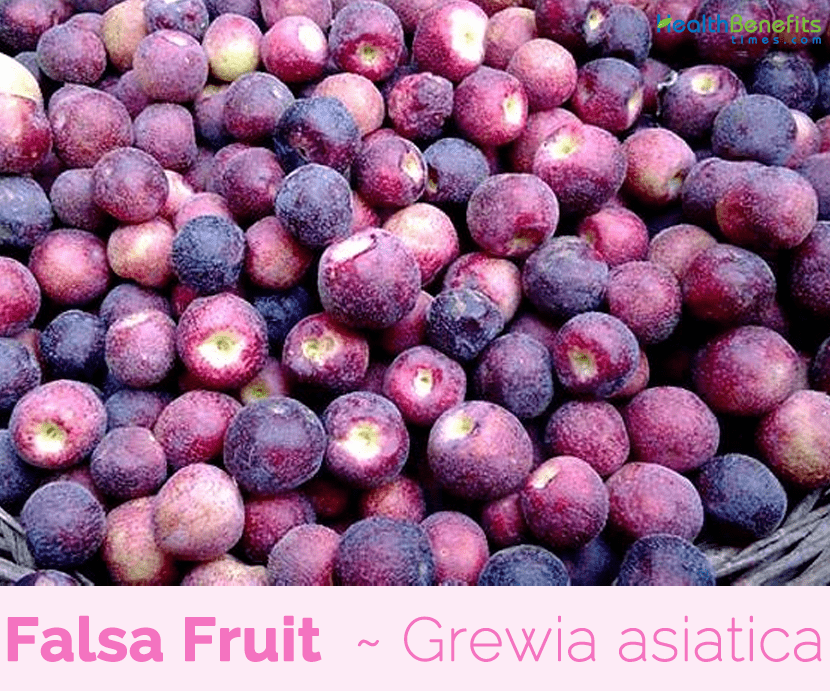Nothing decorates a garden like the lush bloom of trees and shrubs in spring. Among the latter, decorative sakura has a special appeal, the delicate pink double flowers of which bloom on branches free from foliage and occupy their entire length. Of course, this shrub, widely cultivated in our gardens, has a very distant relationship with the traditional Japanese sakura, and from the point of view of botany, it is not at all. The real “surname” of this plant is three-lobed almond or louisiania.
Description of the plant
Three-lobed almond (luizeania) is a flowering deciduous shrub that sometimes reaches a height of 2 m. Outwardly, luizeania looks like a low slender tree or bush with a spherical crown.
Leaves are oblong-ovate, up to 6 cm long, up to 3 cm wide, twice serrate, slightly pubescent below, three-lobed at the tips.
Terry flowers, 2,5 cm in diameter, located singly or in pairs. The petals are round or egg-shaped with blunt ends. Depending on the variety, the color of the petals ranges from pale pink to bright crimson. Each flower contains 25-30 stamens. Flowers open before foliage appears, usually at the end of May.
Luiseania fruits are pubescent round drupes of reddish color with a diameter of about 2 cm, they are inedible, a thin layer of amniotic pulp dries up and cracks when ripe. The bone itself is covered with patterned veins.


Luiseania: characteristics
Louiseania is also called garden or three-lobed almond. She belongs to the numerous pink family. A native of China, she nevertheless grows well in gardens and parks in the middle lane.
It is grown not only in the form of a shrub, up to 2,5-3 meters high, but also trees up to 4 meters. The crown is broadly spreading from graceful dark gray shoots. Leaves with a serrated edge are covered with a light downy underside.
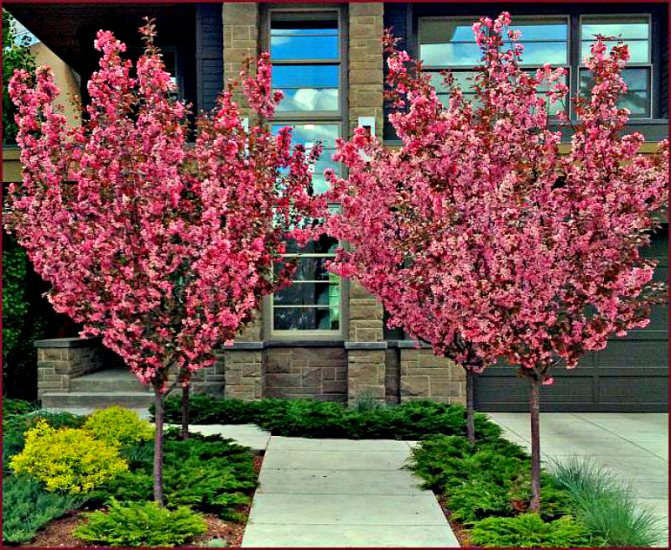

The plant is light-requiring, not very demanding for soil and watering. But if during the period of bud formation and flowering to provide him with sufficient watering, then the flowers are formed especially large and dense. And they keep on the plant for up to 3 weeks or more. In dry spring, without watering, the flowers become somewhat smaller and begin to crumble 10-12 days after the beginning of flowering.
Varieties of three-lobed almonds
There are the following common types of luiseania:
- Captivity. She has large double flowers up to 4 cm in diameter. It blooms simultaneously with the blooming of the foliage. The height of the bush is up to 2 m, it branches well, the plant is sterile, the fruits fall off, not having time to develop.
- Kievskaya. Flowering occurs earlier than other varieties, the color of the flowers is brighter, the flowers are double, enlarged.
- Chinese. This form is obtained as a result of grafting on felt cherries, therefore it is very similar to sakura. Differs in a longer flowering period.
- Tanyusha. This variety is characterized by an earlier and longer flowering. The flowers themselves are smallish, but with many petals twisted at the ends.
- Crimson. Differs in straight shoots, sprinkled with bright crimson flowers.
- Vesnyanka. The most resistant to common diseases type of three-lobed almond.
- Rosemund. It is characterized by the longest flowering (within three weeks), large double flowers of bright pink color.
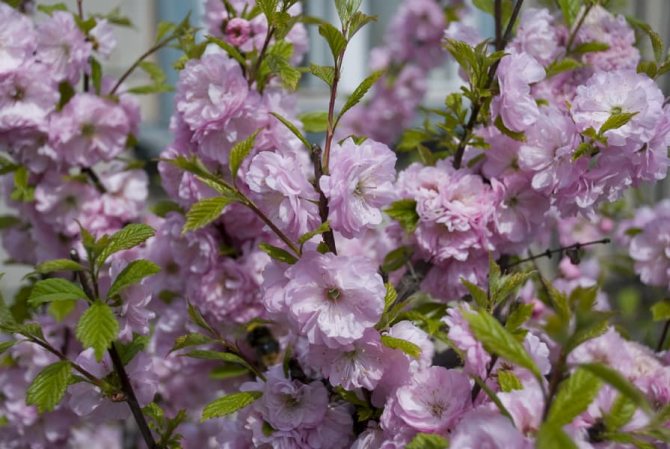

Types and varieties of almonds with photos
The almond shrub can grow up to 2 or 3 m in height, at the same time the almond tree is much taller, it reaches 4-6 m.
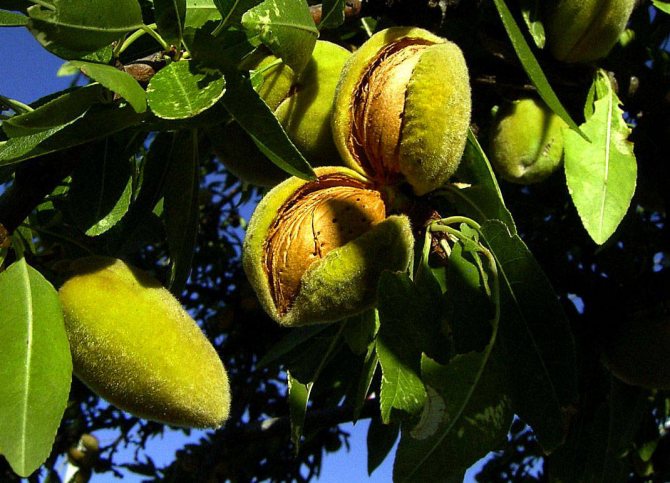

The root system of the plant has 3-5 skeletal roots that penetrate deep into the soil.
A shrub or tree has dark green pointed leaves that grow on brown petioles.
A distinctive feature of the almond is that it blooms very early, starting around March. The flowers of this original plant are white or pink in color, the fruit is a drupe.
Ordinary

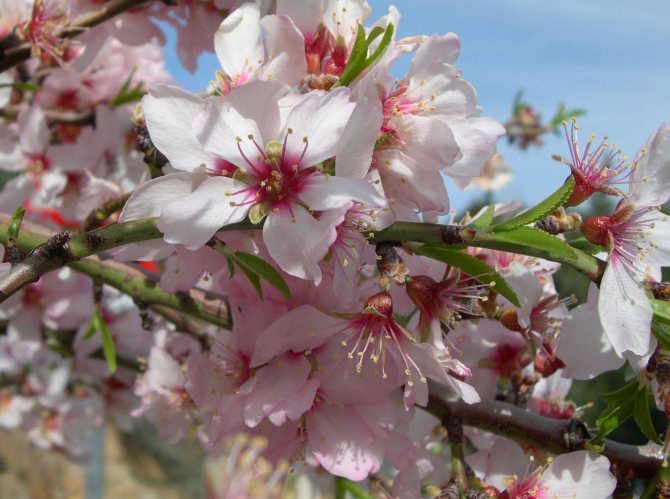
Common almonds are grown for fruit.
This species is subdivided into wild (bitter) almonds and sweet almonds. The first type contains hydrocyanic acid.
Sweet almonds are a popular herb among gardeners.
This plant is not ornamental, but it is often grown on an industrial scale to obtain medicinal fruits with high nutritional value.
Decorative


Ornamental almonds are grown as a group planting or as a single plant.
You can also find almonds planted as hedges.
This amazing plant pleases the eye with its numerous flowers of white, crane, pink or purple color. Ornamental almonds fell in love with gardeners for their original appearance.
Low almonds (steppe, bean)
Low almonds are also called steppe or bean.
It is a deciduous shrub that grows up to 1,5 m in height.
The branches of the steppe almond are straight with a gray bark. The shrub has narrow leathery leaves.
On the seamy side, they are pale green, and on the front, they have a bright green tint.
The flowers of this type of almond are light pink. Flowering continues for 7-10 days.
Among the most popular varieties of low almonds are:
- Dream;
- Anyuta;
- Pink flamingo;
- White sail.
Georgian


Georgian almonds can be seen growing on forest edges or slopes.
The Caucasian type of shrub is highly resistant to cold weather.
This allows you to grow almonds in the suburbs.
The plant externally is a shrub about 1 m high with longer leaves and larger flowers, in contrast to steppe almonds, although they are very similar in appearance.
Terry
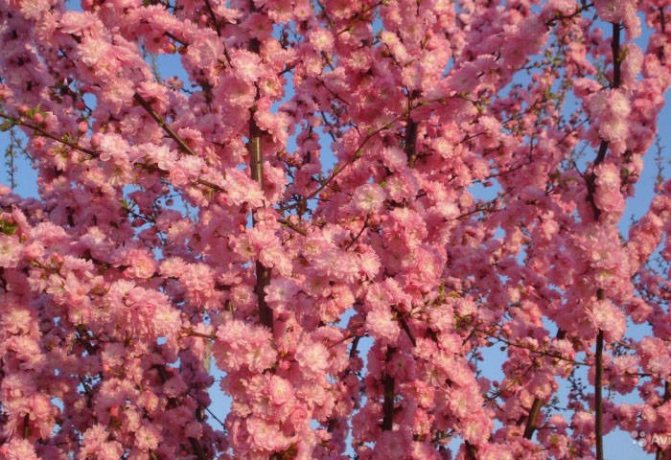

Terry almonds in central Russia are grown only as an ornamental plant.
This species has beautiful double flowers, delicate pink color.
Ledebour
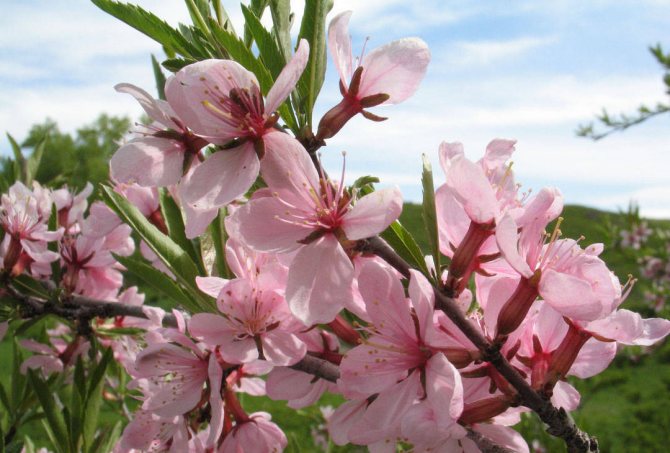
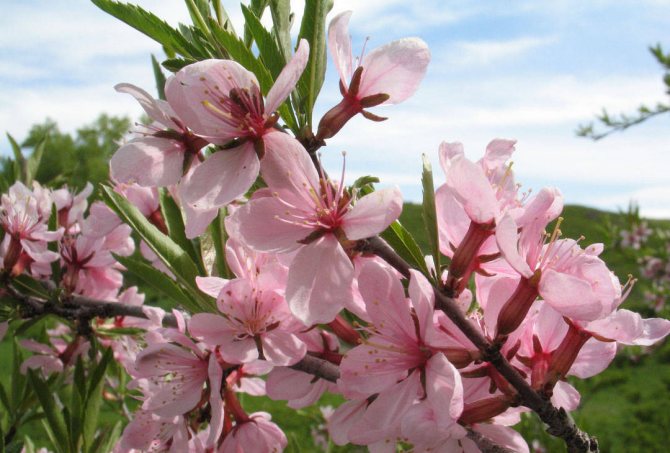
In nature, Ledebour almonds can be found in the foothills of Altai.
This species grows very densely. The plant has dark green leaves.
Ledebour almonds bloom somewhat earlier than other species and varieties.
For 1,5-2 weeks, you can enjoy the most beautiful flowering.
At this time, delightful pink flowers are formed on the shrub.
Petunnikov

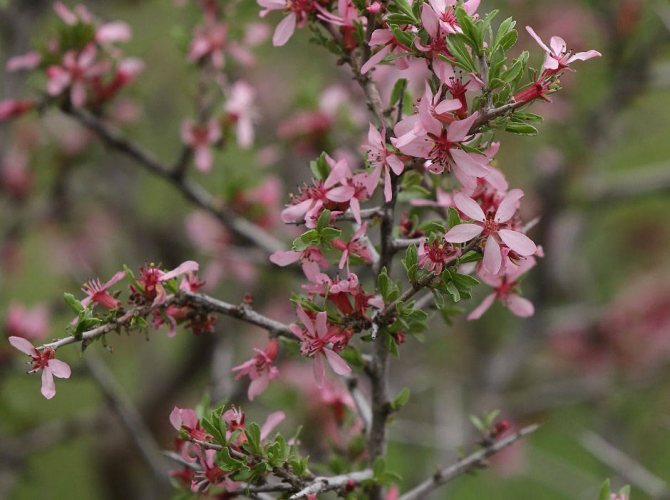
The real handsome man of Central Asia is Petunnikov’s almond.
A shrub with straight or spread-out branches, it grows up to 1 m in height.
The shoots of Petunnikov’s almonds are light yellow, the leaves are pointed, green, and the flowers are separate, have a pink tint.
Three-bladed
Three-lobed almond is a beautiful tree, reaching a height of about 3 m. Its crown is spreading.
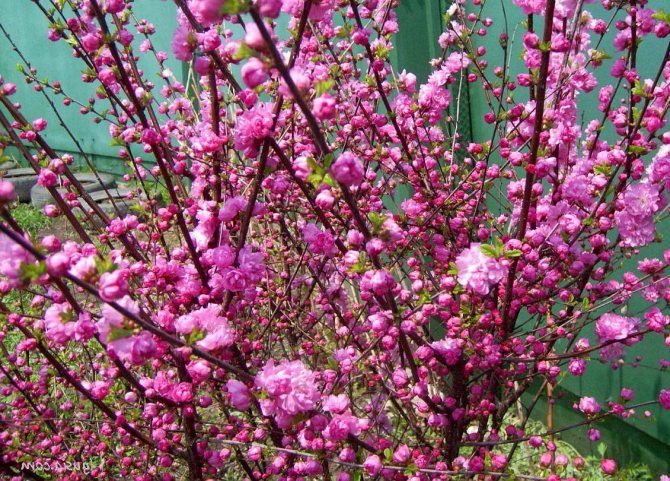
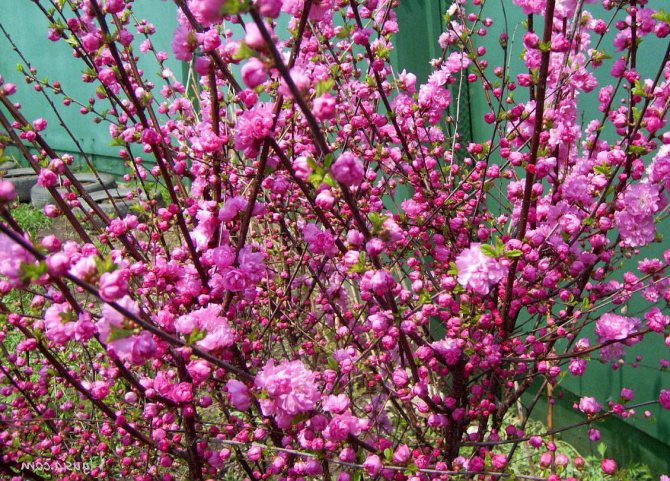
The leaves are three-lobed, which is why it got its name. Almond flowers come in different colors. They grow on stems in pairs.
Three-lobed almonds are of different varieties, differing in terms of ripening, the size of the flowers and their color.
It is this species that is distinguished by a huge number of hybrids. Among the most beautiful and popular varieties are the following:
- Tanyusha – differs in twisted leaves and double flowers;
- Svitlana is a beautiful variety with delicate light flowers, created by Ukrainian breeders;
- Ruslana is a hybrid with flesh-colored flowers that eventually change color to white;
- Chinese woman – a variety with delicate light pink flowers;
- Hybrid # 3 – Great during flowering, which is similar to cherry blossom.
Dessert almonds
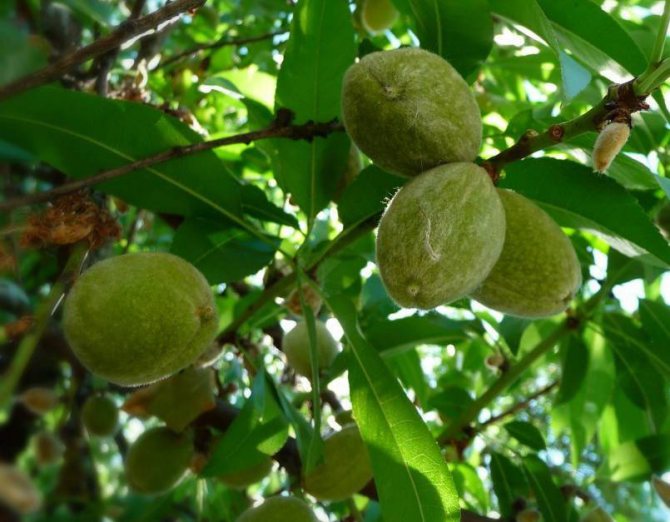

Dessert almonds grow well in central Russia. This species tolerates frost well. The kernels of such almonds are very tasty, sweet and oily.
Site selection and preparation for landing
It is best to purchase a seedling at the age of three years. When buying, special attention should be paid to the soil in the container, it must be fertile and sufficiently moist. The seedling itself should not have damaged shoots, signs of diseases and pests.
Luiseania prefers well-lit areas, but can grow remarkably in partial shade. The main thing is that the site is protected from drafts and cold winds.
You should also check the level of groundwater flow, which should not come close to the surface of the earth, three-blade almonds do not tolerate waterlogging of the soil.
Almonds are unpretentious to the content of the soil, but for better growth and flowering, you need to choose fertile soils. Most preferred are slightly alkaline or neutral loamy soils. On the eve of planting, the site is cleared of weeds, well dug up and leveled.


How to breed zamiokulkas: propagation by leaf and tubers at home
It is interesting for novice plant breeders to know how zamiokulkas blooms in nature and at home? The flowering of zamiokulkas in nature is a rare phenomenon, since it happens only at a very mature age. In room culture, under appropriate conditions of maintenance, good care, the plant blooms with white and light cream flowers, but already at a fairly old age.
The inflorescence is an ear. Flowers of different sexes are located separately on the cob, female – from below, male – from above, and between them there is a zone of sterile flowers. Due to this structure of the inflorescence, its self-pollination is impossible. In nature, the succulent is pollinated by wind or crawling insects that live in the plant’s homeland.
The photo shows how the zamioculcas blooms: inflorescences consisting of an ear and a veil, which appear at the very base of the leaves at a very old age of the plant.
Reproduction of zamiokulkas leaf at home is as follows. In an adult plant, the leaf is separated from the central vein (rachis) of a complex leaf, the cut is sprinkled with charcoal, the cut leaf is dried for 1-2 hours and planted at an angle in a glass with soil so that 1/3 of the leaf is in the substrate.
We offer you to familiarize yourself with: Tomato varieties and their planting scheme
Reproduction of zamioculcas with a tuber is a fairly simple way in which only an adult plant with large tubers can be propagated. The tuber, growing, divides itself, and the daughter tubers are formed quickly enough. At the next transplantation of the mother plant, the tuber is divided so that at least one growth point is preserved in each part.
The larger the part taken for reproduction, the faster a developed plant will turn out. After dividing, the resulting parts are dried for several hours, the sections are treated with charcoal and planted in containers filled with a light substrate with a loose structure, not much burying the tuber head. Regular moderate soil moisture begins 3 days after planting. Dividing a tuber is not the most convenient way of reproduction, since a new bush grows very slowly.
Landing
Experienced gardeners recommend planting three-lobed almonds in the fall. It should also be taken into account that for successful cross-pollination, several seedlings must be planted at once, the distance between them should be provided for at least 3 m.
When landing, adhere to the following scheme:
- Dig a hole 40 * 40 * 40.
- A drainage layer is poured onto the bottom in the form of broken bricks or fine gravel.
- A layer of sand is poured over the drainage.
- A stake is driven into the center of the pit for support.
- A seedling is placed in the middle of the pit.
- The excavated soil is mixed with humus, leafy soil and sand.
- The roots of the seedling are covered with soil mixture, carefully tamped, while the root collar should be flush with the surface of the earth.
- The planted plant is watered abundantly and tied to a support.
- The root circle is mulched with peat or humus.
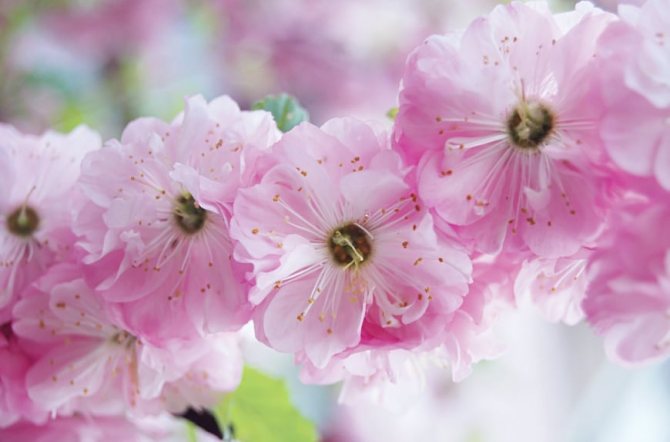
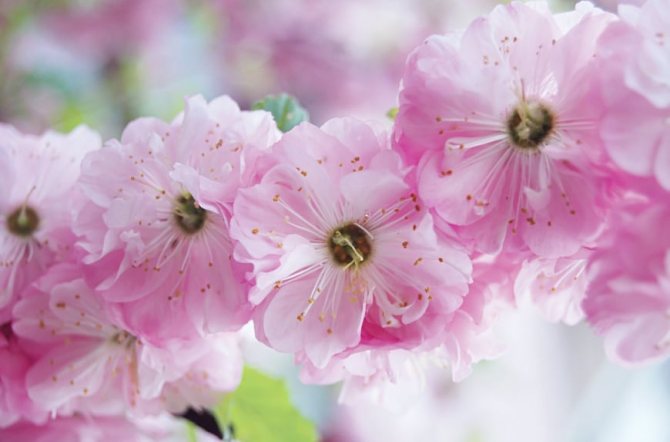
Reproduction Louisiana
in the literature, the sterility of the terry forms of Louisiana is indicated, it is noted that only sometimes they ripen single fruits. In the conditions of Western Ukraine, if desired, you can get a significant harvest. So, from a tree with a height of 2,7 m and a crown diameter of about 2,5 m (‘Kievskaya’), more than 1200 fully ripe fruits can be harvested. They are small (weight 4,7 g), dull red, pubescent. Pericarp pulp is very dense, extremely acidic, inedible. The stone is free, rounded, weighing up to 1,2 g. In August, after ripening, the fruits fall off, and the pericarp dries up, becomes leathery and it is difficult to separate it from the stone.
Care
Caring for luiseania is not particularly difficult, but some effort will have to be made, and then the plant will thank you with abundant flowering and a stunning decorative look.
Watering
When watering, it is necessary to comply with the rate and not flood the plant, it does not like excessive moisture and can even easily tolerate a slight drought.
Young seedlings need regular watering 2 times a week, 2-3 buckets per bush, and adult plants can be watered only in hot summer, and at other times they will have enough natural moisture obtained with precipitation.
Watering is carried out in the morning or evening hours, with settled water at room temperature. Watering must be done carefully, strictly at the root, without touching the branches.
After watering, it is advisable to shallow soil loosening and mulching. You also need to remove weeds in a timely manner.
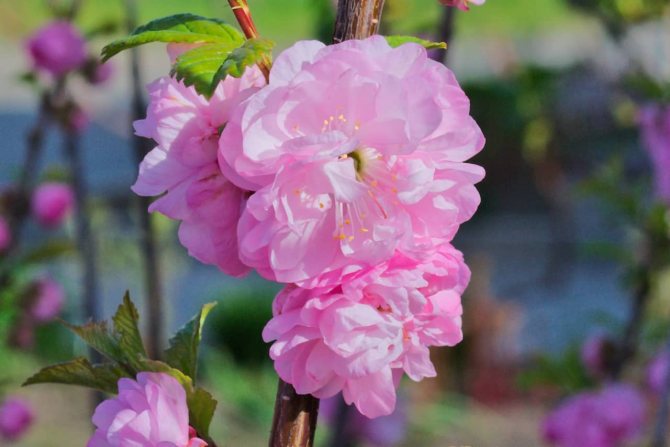
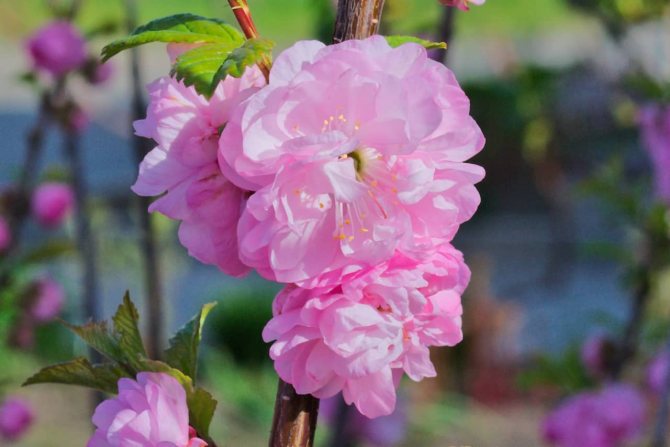
Additional fertilizing
Three-lobed almonds can also grow on depleted soils, but it is better to add humus immediately after the flowering period, and after a week add urea. Subsequent top dressing is carried out in the fall by digging the soil with superphosphate.
Trimming
Pruning is done after winter, removing frozen and damaged branches. After the end of flowering, the peduncles must be removed.
To form the crown, the old 5-6-year-old shoots are removed after flowering, thus rejuvenating the plant.
Reproduction
Three-lobed almonds can be propagated using seeds, cuttings, cuttings and root shoots:
- Sowing seeds. This is a very long and laborious way. A plant grown from a seed needs grafting, but this does not guarantee the preservation of species characteristics. This method is rarely used.
- Cuttings. Cuttings 15-20 cm long are cut from the tops of woody shoots. Before planting, they are kept for a day in a solution of a root growth stimulator. Cuttings are planted in greenhouse conditions in soil consisting of peat and sand. A month after rooting, they can be planted in a stationary place in the garden.
- Reproduction by layering. At the very beginning of spring, you need to find low-growing healthy branches on the bush, bend them to the ground, fix them with staples, and sprinkle the contact with soil, water it periodically, and a year after rooting, the layer can be disconnected from the main plant and planted in a stationary place in the garden …
- Root shoots. If lateral shoots are formed from the main plant, then you can carefully dig them out in early spring and separate them together with part of the root. Next, the shoot with the root is planted in a stationary place in the garden in the usual way.

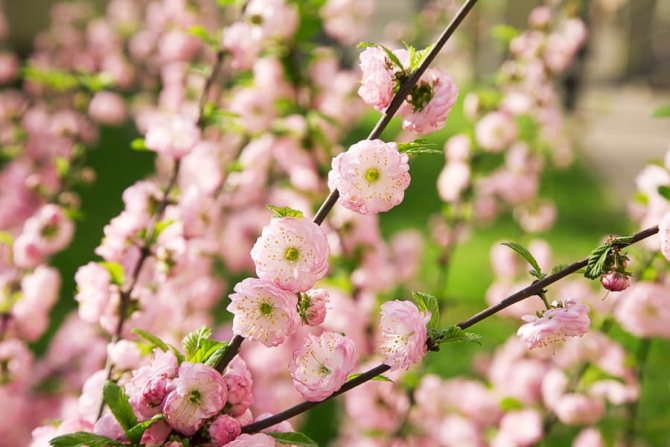
Shelter for the winter
Three-lobed almonds have medium frost resistance. The plant must be covered for the winter. To do this, after the autumn pruning, the branches are tied with a rope and wrapped with covering material, and the near-trunk circle is sprinkled with a layer of dry earth, leaving the root neck open. In the spring, the shelter is being dismantled.
Fight against diseases and pests
The main enemy of the three-lobed almond is moniliosis. It manifests itself in damage to the wood, which leads to the death of the bush. They cope with this fungal disease by spraying with foundationol during flowering.
Of the harmful insects, three-lobed almonds are loved by leaf rollers, moths, aphids and the sapwood bark beetle. These uninvited guests will be helped by spraying with chlorophos or karbofos three times at intervals of 2 weeks.
For aphids, tobacco infusion with laundry soap in the form of spraying will help, and for the sapwood bark beetle – whitewashing the trunk with a lime-clay solution with the addition of bustilate.
Diseases and insects
There is nothing difficult in the cultivation of luiseania, as long as the tree is not infected with fungal spores and pests.
- Cercosporosis first affects the leaves, and then spreads to the shoots and petioles. The disease is activated at the beginning of summer, and its first symptoms are spots with a gray bloom. The leaves fall off, forcing the plant to grow new ones, it does not have the strength to form fruits. Fungicides are used to treat cercospora.
- Rust looks like ginger spots on the leaves that grow larger until the leaves are completely covered. Digging and cleansing dead leaves acts as a prophylaxis against disease.
- Gray rot is a serious disease that, when wet, spreads intensively throughout the garden and infects neighboring trees. Symptoms: brown spots with white fuzz. Fungicides help against disease. The damaged areas of the tree will have to be cut and burned: they simply cannot be thrown away, since this contributes to the spread of the disease.
- Spider mites are especially dangerous during dry periods. Insects weave a cobweb and feed on tree sap, weakening their immunity. As a result, the plant loses its natural defense against disease and withers away. Ticks do not take insecticides, arm yourself with insecticides instead.
Possible diseases and pests
In the process of growing, gardeners are faced with a problem such as moniliosis. This is a fungal disease that enters the plant tissue through flowers, where it germinates and infects wood. As a result, the branches dry up and take on a burnt appearance. Control measures: spray the plants using Bordeaux liquid every 20 days.
The culture can be attacked by pests such as leafworm, aphids. In the fight against the leaf roll, you can use a chlorophos solution by spraying the caterpillars with it. A solution of household soap will help against aphids, which needs to be treated with leaves affected by insects.
Almond cultivation in the suburbs
Louiseania Louiseania (three-lobed almond) is a family of rosaceae (Rosaceae), which includes more than 3000 plant species. These are fruit trees – plum, apricot, apple, pear, cherry, etc .; and ornamental shrubs – spirea, hawthorn, quince, etc .; and berry – raspberries, blackberries, strawberries, etc.; and, of course, a rose. Three-lobed almonds are often called sakura. This is a rather large shrub, it can reach 4 meters, but it can even be formed by pruning. It blooms before the leaves open (late April – early May) for about 2 weeks with single small (3-4 cm) flowers. At this time, it is impossible to take your eyes off the bush – it seems that all the branches are covered with vanilla roses. And if you plant tulips next to them in color, then you will see a breathtaking spectacle of romantic tenderness.
Three-lobed almonds are unpretentious, winter-hardy, drought-resistant, undemanding to the soil. With minimal care, it blooms profusely in the Moscow region every year. When there is little snow, and the thaws are lingering, the almonds wake up, and when late frosts appear, flower buds can be partially damaged. The flowering is then less lush. If in the spring you find frozen shoots, then it’s time to carry out sanitary pruning.
Almonds are affected by moniliosis during flowering, in which leaves, shoots, and flowers can be affected, therefore, after flowering, we must cut them off. By the fall, annual shoots grow, which I recommend pinching at the end of September (who does not know what it is, look in the “dictionary”) for better ripening. The next year, these annual shoots will bloom. For prophylaxis against moniliosis, in early spring, in calm weather, spray almonds with 1% Bordeaux liquid on a green cone.
Almonds are planted in a sunny place in well-drained soil, preferably fertile loam.
Reproduction
Three-lobed almonds can be propagated by seeds, layering or cuttings.
Seeds. Sometimes the form with double flowers can set fruits under favorable conditions. Which is quite rare in the Moscow region. But if this happens, then the fruits are cleaned of the shell and immediately sown into the ground. Alternatively, you can sow with the shell in a container with earth and put them on the top shelf of the refrigerator for 3-4 months for stratification. However, you should not hope that terry almonds will grow. Seedlings will be uneven, and the flowers of the seedlings will be simple or semi-double, because the terry form is sterile.
Cuttings. This is the most reliable breeding method. In summer (June), green cuttings are cut (lignified cuttings do not form roots well) with two internodes. The lower incision is oblique 8-10 mm below the kidneys, the upper one is straight. The lower leaves are removed completely, and 1/3 of the leaves are left on the upper ones. Rooted in a semi-shady place in loose soil, dipping the lower cut into the root before planting. From above, each stalk is covered with a half of a plastic bottle, which is removed in cloudy weather only when new leaves appear in the internodes.
Layers. In June, a strong semi-lignified shoot is chosen and pinned to the ground. Before the hairpin, it is recommended to squeeze the shoot with a little wire. The tip of the shoot is cut to 2-3 internodes. Such an shoot can be planted already this year, as a rule, it has a well-developed root system by the fall.
Vaccination. For those with vaccination experience, try propagating almonds with a three-blade graft. For experienced gardeners, this will not be difficult.
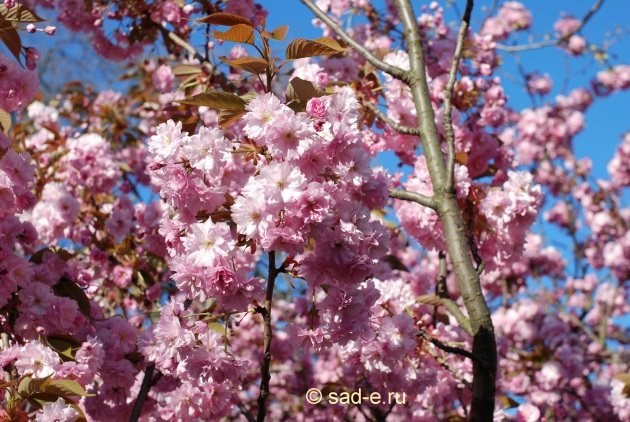
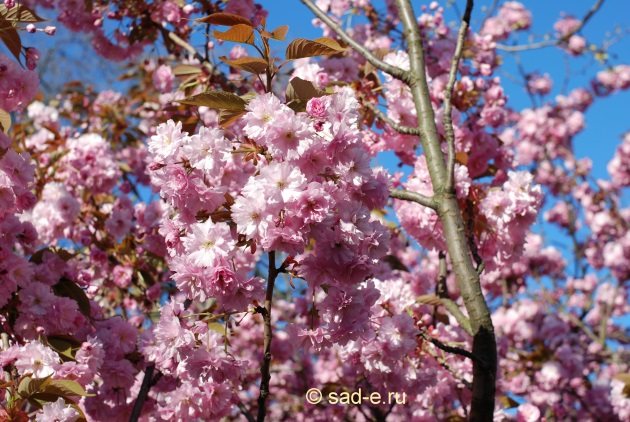
It is possible for the bark to heat up at the root collar, so we do not huddle and insulate the root collar for the winter.
They say that tits peck at swollen flower buds, I did not notice this. Maybe because I always have bird food in my garden.
Almonds look good both in single plantings and in group plantings. Now you can buy copies on the trunk.
Trimming
In early spring, before bud break, all frozen, broken, diseased or deforming branches must be removed.
After the end of flowering, you can proceed to formative pruning, during which 3 tiers of skeletal branches are removed:
- in the first year, three branches are chosen, located 15-20 centimeters from each other and shortened to a length equal to 15 centimeters;
- the next 2-3 years, 3 tiers are formed on the central conductor, located at a distance of 20-30 centimeters;
- shoots that are insignificant for the formation of the crown are pinched several times over the summer;
- the rest are cut to 50-60 centimeters;
- at the end of the work, the central conductor is shortened so that the distance between it and the upper tier is 55-60 centimeters.
In the fall, after the leaves fall off, sanitary and anti-aging pruning is carried out. That is, they remove all dry, diseased, broken, growing in the wrong direction and thickening the crown of the branches.
It is worth remembering that when cutting thick branches, the cut site must be processed with garden varnish.


Almonds are pruned in the spring, after flowering ends and in the fall, after the leaves fall
Sorts
Sweet varieties of almonds are grown in the culture, the following types are especially popular:
- Jubilee – the variety blooms rather late, has good drought resistance. The skin is of medium thickness and the kernel is sweet, firm and dry;
- Ayudagsky – this variety is late-ripening and early-ripening, the first fruiting occurs already at the 3rd year of the tree’s life. Fruits, covered with a soft shell, are a dense, slightly flattened oval core of light brown color;
- Sevastopol – such an almond boasts excellent resistance to heat and drought, in addition, it brings a huge amount of harvest. The shell of the fruit is soft, and the kernels themselves are dense, sweet, colored in white;
- Mangul – This late-ripening variety is not afraid of drought. Hard and dense kernels with increased oiliness are covered with a soft shell. A distinctive feature will be good immunity to most diseases and pests;
- Dessert – such a self-fertile almond is well suited for growing in central Russia, because it is not afraid of recurrent frosts and frostbite of flower buds. The shell is soft and rough. The oval kernels are very sweet and oily. Primorsky or Spicy almonds are usually used as pollinators for this variety.
